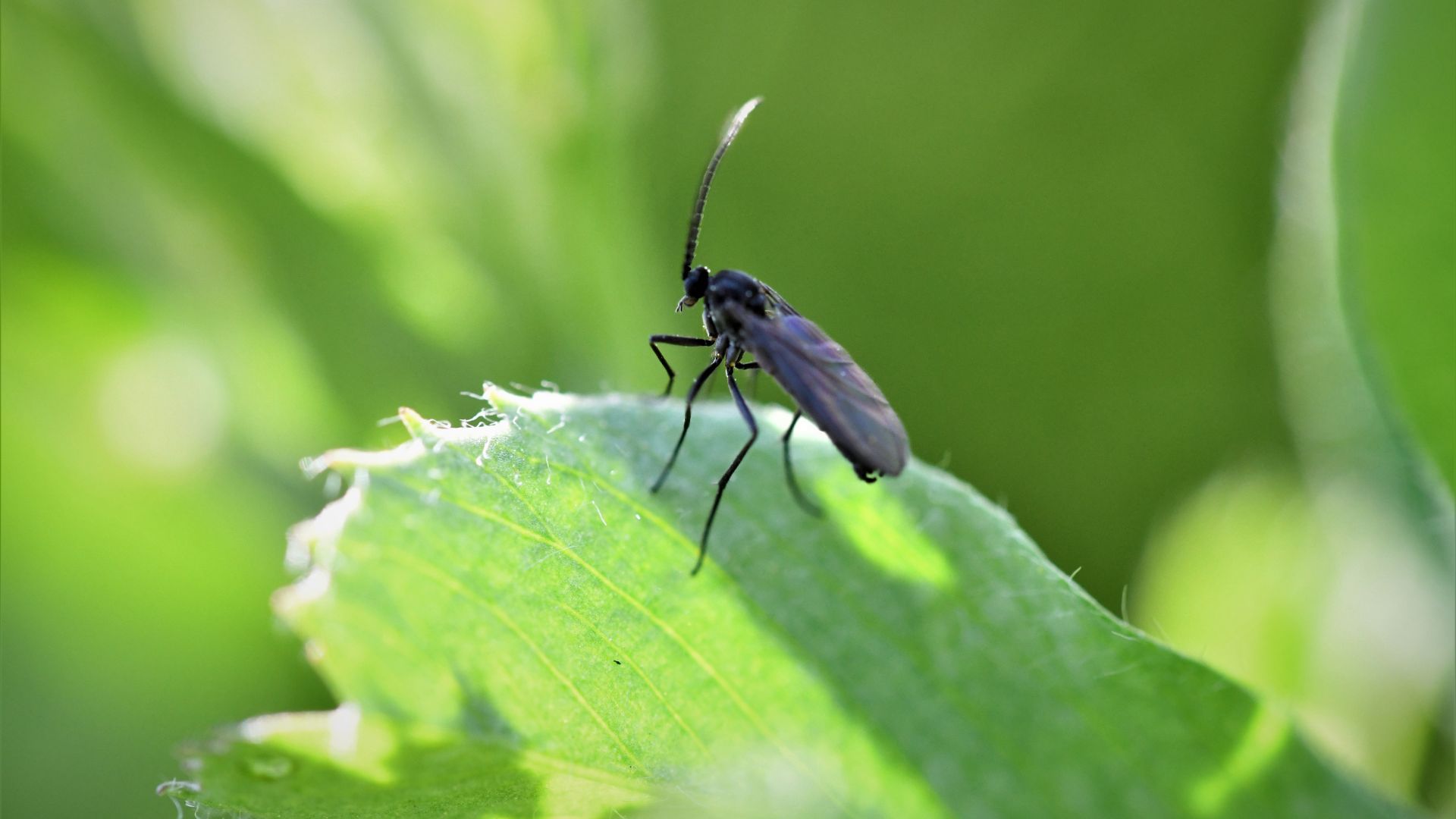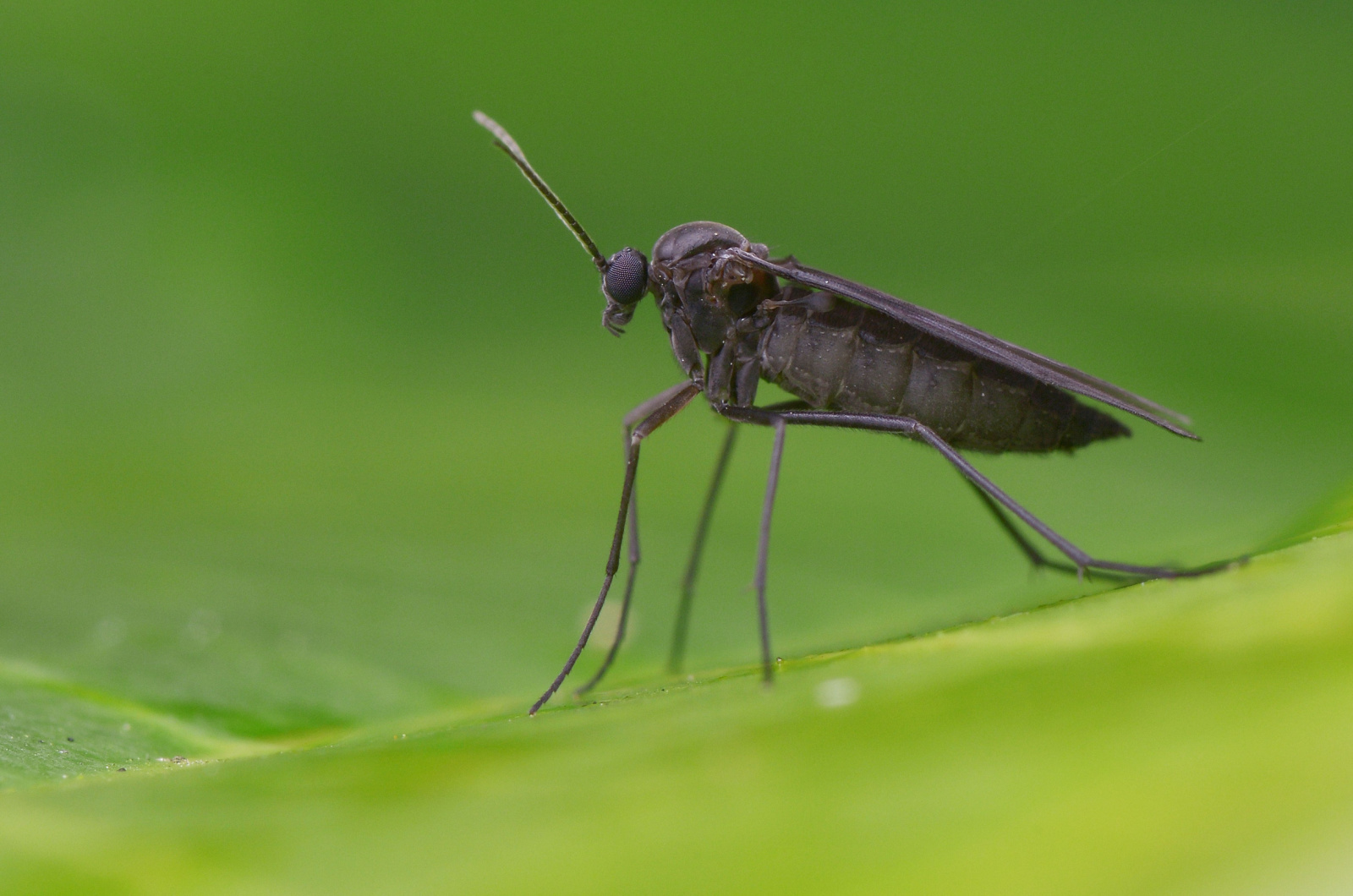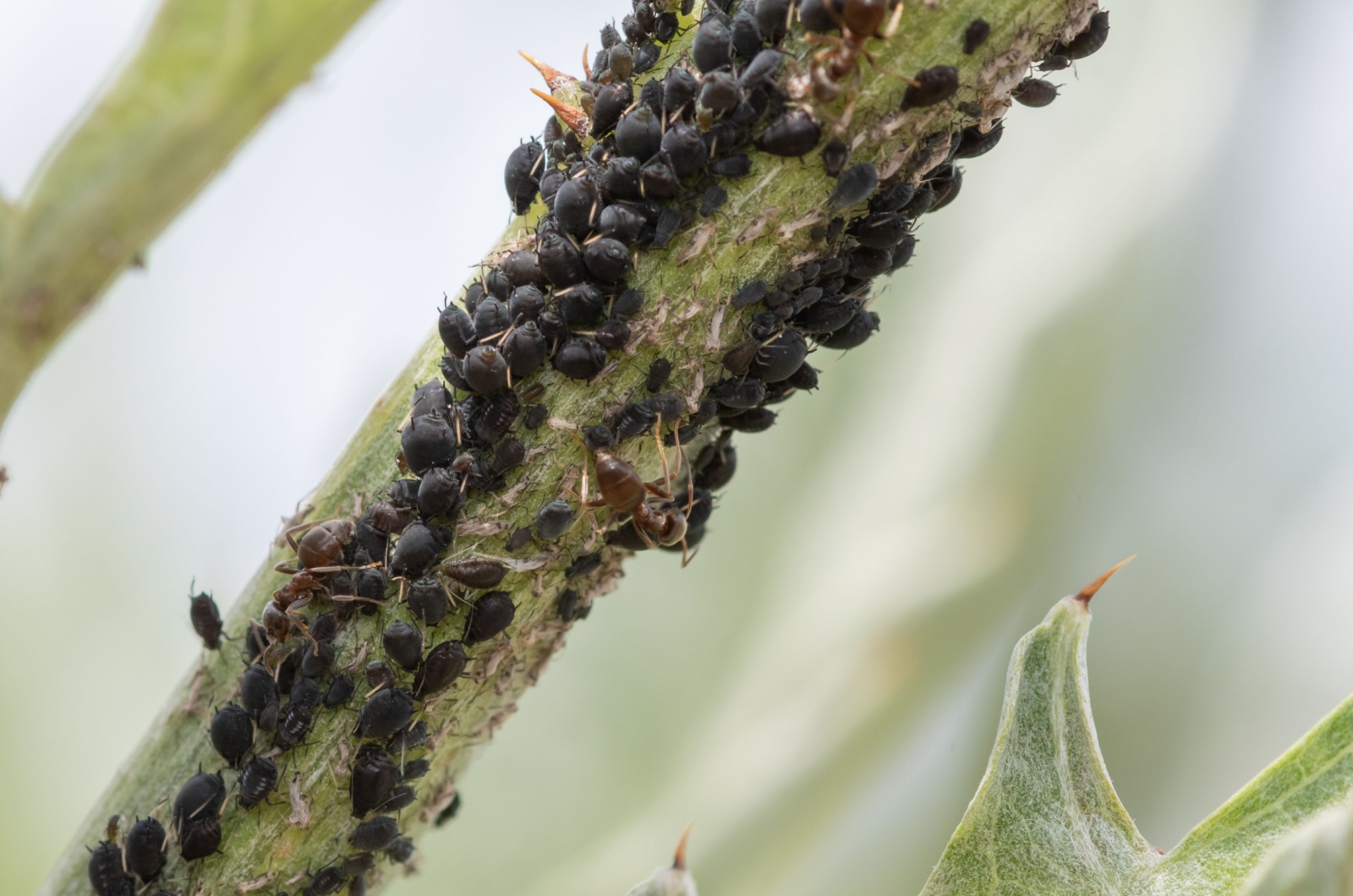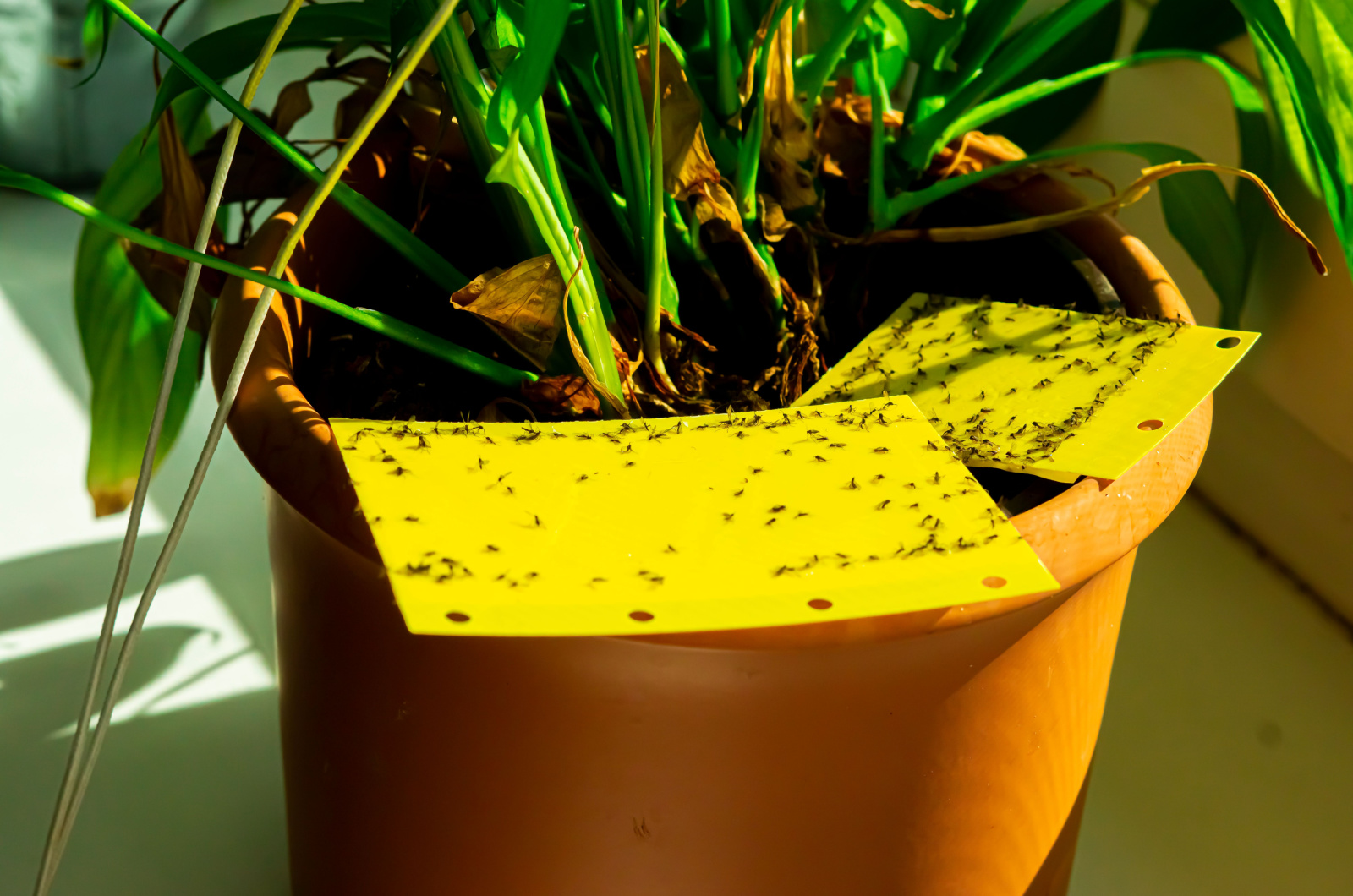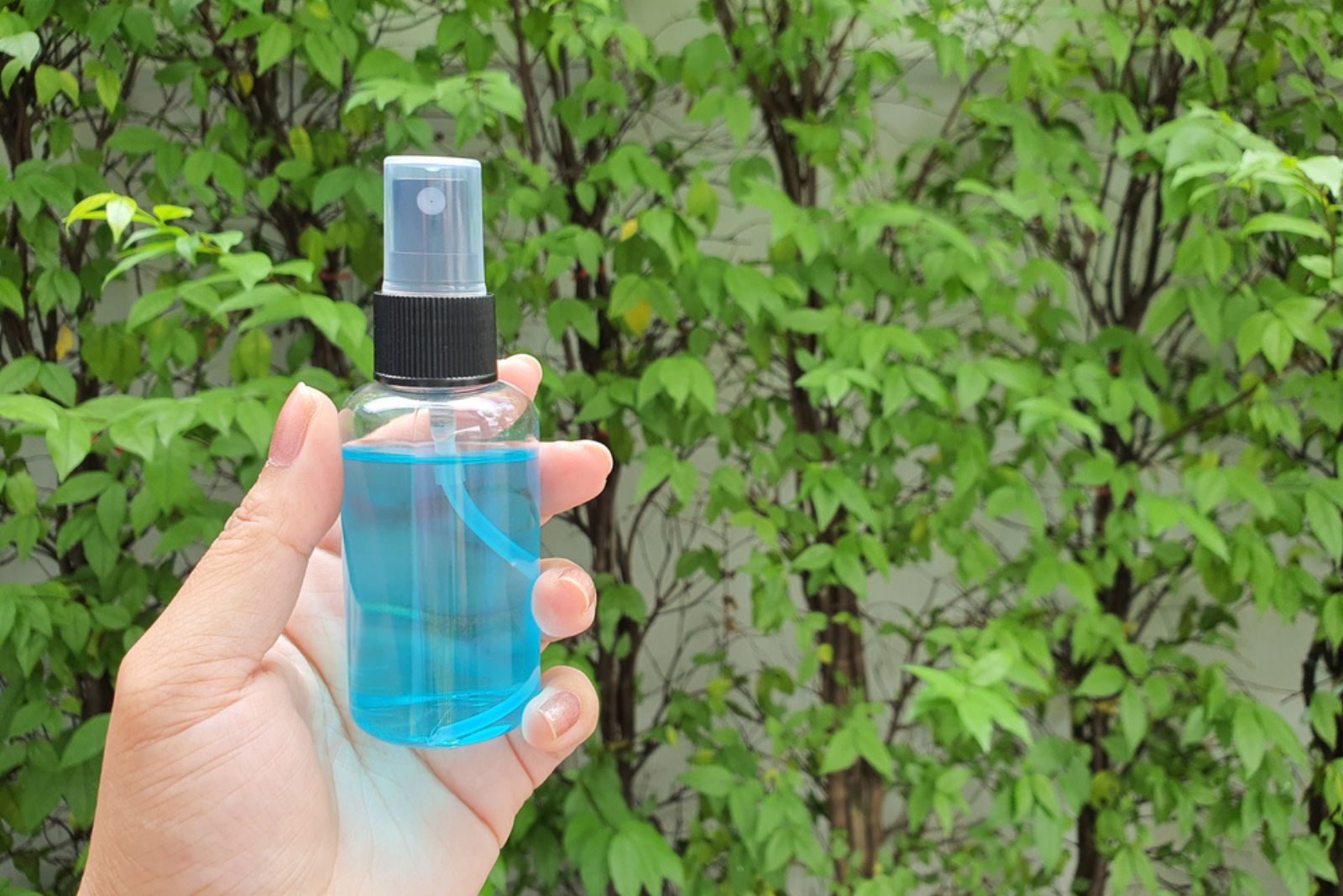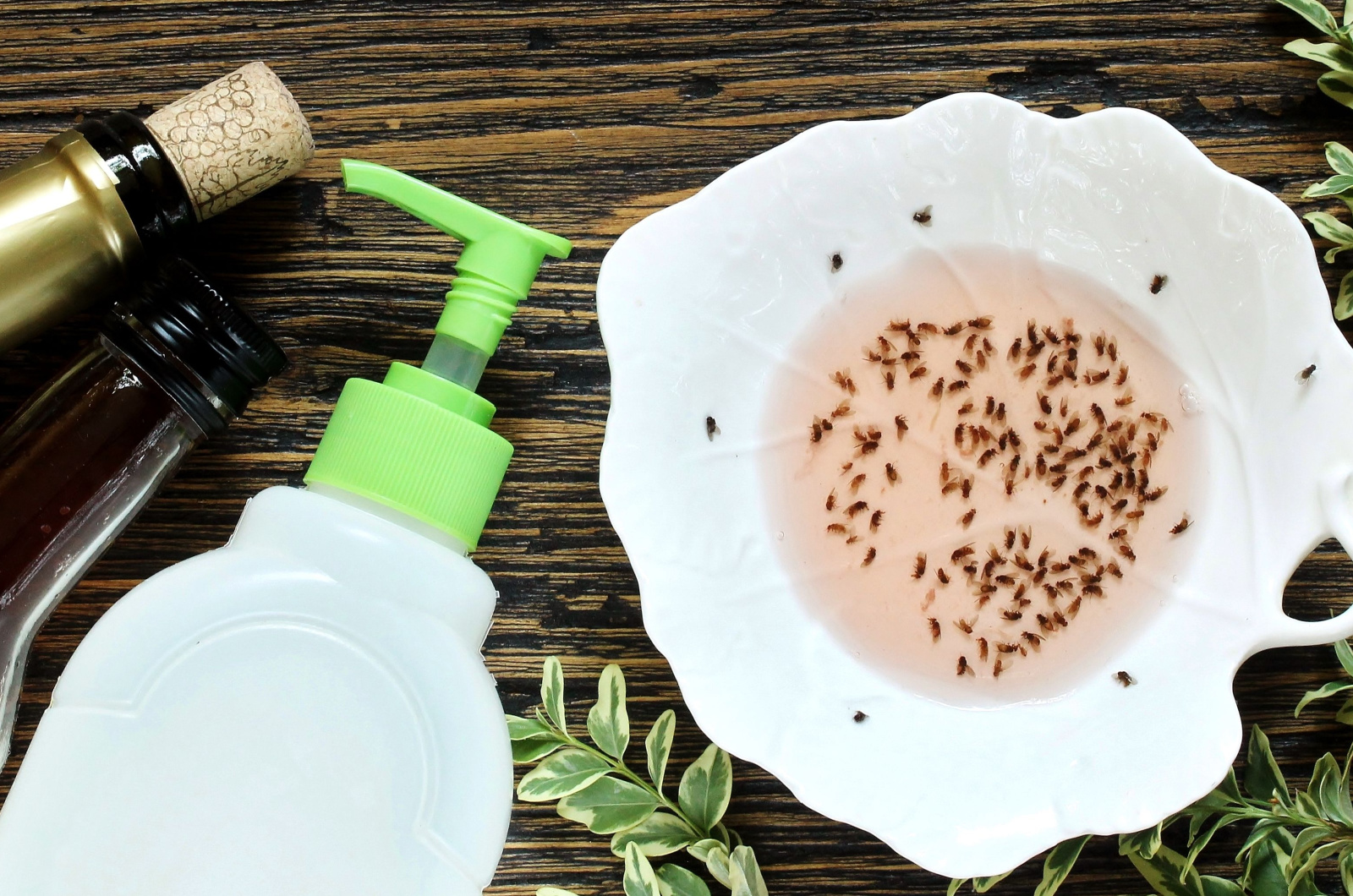Fungus gnats are pesky critters that can damage your houseplants significantly. They reproduce like crazy and overtake your entire plant collection in no time!
It’s important to spot gnat infestations and act quickly in order to prevent spreading. In this article, we are going to cover how to identify gnat infestations and some of the best remedies you can use to treat them.
Let’s get started!
First Step: Identify The Gnats
If you notice that your plant’s leaves are starting to turn yellow or brown and there are a lot of plant flies buzzing around, then your plant is probably dealing with gnats.
Adult fungus gnats are not that damaging to the plant, they are simply annoying. However, their larvae can feed on the plant’s roots and significantly damage it to the point where it no longer grows and develops.
Second Step: Determine Infestation
Moisture and organic matter attracts gnats. Them flying over the soil indicates a gnat infestation, especially when you water your plant. Wilting and yellowing of the leaves are also a sign of infestation, including stunted growth and an overall weakened plant.
Gnat infestations make the plant more susceptible to other pests and diseases as well. If the infestation is not too severe, there’s still some time to save your plant. But first, let’s talk about what attracts these pesky critters.
What Causes Gnat Infestation?
As we mentioned earlier, excessive moisture and organic matter are all it takes to catch gnats’ attention. They can also be attracted to fruits, drains, and trash cans with decaying matter, but might spot some delicious plants along the way.
These pests mostly enter through cracks around windows, walls, doors, or clogged drains. Once they’re in, they will lay eggs in the soil or even trash cans, where they will further grow and reproduce.
So, fruit bowls, pet waste, overwatered plants, decaying matter, trash cans, and dirty dishes can easily attract gnats. Keep your house clean and avoid overwatering your plants to enjoy a gnat-free environment!
Third Step: Start With Natural Remedies First
There are a couple of things you can do naturally before deciding to employ chemical treatments. You should let the soil dry out completely between watering sessions and get rid of any decaying matter such as dead flowers, leaves, or other parts of the plant.
Then, you can combine soap and water to create a mixture that will kill larvae – one quart of water mixed with a tablespoon of liquid soap should be sprayed over the soil. Additionally, mix soap, sugar and vinegar to create a gnat trap.
All you have to do is mix a couple of tablespoons of apple cider vinegar with a few drops of soap and then add some sugar to it. Put this trap in a place where gnats usually buzz around. Sugar and vinegar will attract them and they will get caught in the dish soap and drown.
What you can also do is use raw potato chunks – simply put them in the soil for a few days and replace them with new ones until the gnats are gone. Yellow sticky traps work effectively on adult gnats.
Lastly, you should repot your plant if the soil is severely infested with larvae. Always use fresh soil and clean pots.
You might also like: Pest Control During Flowering: What Are The Best Methods?
Fourth Step: Use Chemical Treatments
If you can’t get rid of gnats naturally, it’s time to bring out the big guns. I would suggest you use hydrogen peroxide first – mix 20% hydrogen peroxide with 80% water and use this mixture to drench the soil until it starts coming out through the drainage holes.
Bacillus thuringiensis israelensis (Bti) can be used to specifically target gnat larvae without damaging the plants. Make sure to follow the instructions displayed on the packaging when using Bti.
Insecticidal sprays such as those containing pyrethrins can be very useful when getting rid of these critters. However, you can always hire a professional to help you get rid of a gnat infestation.
Last Step: Take Preventative Measures
Once you’ve read what causes gnat infestations, it’s pretty straightforward what not to do. Here are a few tips that will help you deter gnats:
• Inspect plants regularly
• Get rid of dead leaves and flowers
• Fill out any cracks in your home to prevent them from coming in
• Clean your dishes regularly
• Always use well-draining soil and pots with drainage holes
• Empty your trash cans
• Don’t give your plants too much water
• Add a layer of sand or DE on the surface to prevent gnats from laying eggs
• Cover your fruit bowl and keep your fruits and veggies in the fridge
You might also be interested in: These 10 Pest-Repellent Plants Will Keep Bugs Away From Your Yard

